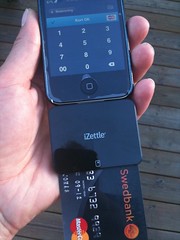
Christmas is coming, the goose is getting fat.
Not sure what a psychiatrist would make of this admission, but “Christmas is Coming” was my favorite carol as a child. No, scratch that. It was my favorite Christmas carol to sing as a child, though I preferred listening to others. Does this distinction make sense? Think of “100 Bottles of Beer on the Wall”, for example. Fun to sing given the right context, but I’d gamble that most of us have a long list of songs we’d rather listen to…
Originally a nursery rhyme, “Christmas is Coming” is most enjoyable when sung in the round with your brother and sister while commuting an hour over icy roads to school, patient mother at the helm occasionally joining in for a round.
If you’re inspired, but can’t remember the words, here’s a pre-Christmas gift for you:
Christmas is coming, the goose is getting fat
Please put a penny in the old man’s hat
If you haven’t got a penny, a ha’penny will do
If you haven’t got a ha’penny, then God bless you!
If you picked up on a subtle deviation in the first line, the change is mine. I’ve always sung about a single goose rather than a flock. Stick to the original if you’re a purist.
About a week ago a friend told me, “I can always tell when it’s you because you’re a whistler.” I guess I am. Not a good whistler, mind you, but an enthusiastic whistler. Sort of like my dancing! Not fun to watch, but plenty funny! And enthusiasm isn’t the only common denominator, though I’m not sure how to put my finger on the other similarity. Freestyle, perhaps. I’d like to say innovative, creative, improvisational or even uninhibited. But I’ll surely be called to account if I gloss up the merits of my freestyle whistling and dancing. Melodies and rhythms are flexible, mere inspirations for extemporaneous experimentation. Ah-ha, I’ve got it. I’m a jazz whistler!
What? Your BS detector is buzzing? Hmmm… Must need a new battery.
What’s your favorite Christmas carol? Dare to whistle it?
Related articles
- Christmas is coming early: Check out Jimmy Fallon’s ‘Saturday Night Live’ promo (popwatch.ew.com)
- Christmas is coming, the goose is getting fat… (roundaboutlondon.wordpress.com)
- Christmas is coming, the goose…. (chittlechattle.wordpress.com)
- Goose – taking its place at the table? (theglobeandmail.com)



















